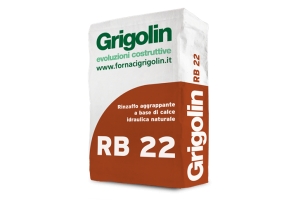Balbi Palace
Place:
Venice (VE)
Address:
Venice (VE)
Category:
Restorations
Description:
To carry out the restoration, the designer and construction manager, the architect Sanguin, chose the products of Fornaci Calce Grigolin in Ponte della Priula (TV), a company specialized in the production of premixed mortars and plasters for new buildings, for particularly valuable restorations and for interventions with low environmental impact. Grigolin products were chosen for their great performance, the remarkable versatility of use and the high resistance and stability over time.
First of all, a bedding mortar was needed to be inserted into the drilling of the masonry to replace the stone elements in place. This was not to be cement-based but compatible with the pre-existing historical materials in the masonry and at the same time endowed with particular resistance to allow operational continuity in the laying of the steps. Palladio Intonaco Forte was chosen, a dry premix based on selected pozzolanic binders, aerial lime, calcareous aggregates and special additives which, mixed with water, allows to obtain a mortar with a plastic consistency to be applied in variable thicknesses for consolidation interventions. masonry especially in buildings of historical and architectural interest. Totally free of cementitious binder, Palladio Intonaco Forte guarantees total compatibility with any masonry on which it is necessary to intervene, offers mechanical performance beyond the average, and has a remarkable ability to adhere to the substrate, managing to combine the characteristics of the cementitious system with those of a lime-pozzolan system, notoriously more suitable for interventions in historic buildings. After cleaning the wall substrate by removing efflorescence and saline concretions, the product was mixed with water until a homogeneous plastic mortar was obtained, which was applied manually. Its resistance of 2.5 MPa just three days after installation, allowed the installation of two to three steps per day, speeding up the execution of the works.
After laying the steps, it was necessary to restore, by patching, the external plaster in cocciopesto and the internal one, based on lime, which had suffered damage due to the removal of the same stone elements. Thus, the use of Grigolin products has been expanded, again on the basis of specific agreements with the Superintendency.
The basic rough coat for the external and internal plaster was created with RB 22, a dry premix based on calcosiliceous aggregates, specific hydraulic binders with a low content of soluble salts and additives designed to improve workability and adhesion. Also in this case the product was mixed with water to obtain a plastic mortar, applied by hand only after having thoroughly wet the base and cleaned the surface, removing the incoherent parts.
Palladio Tonachino Cocciopesto, a dry premix based on air lime, natural hydraulic lime and marble aggregates, was then applied to the outside as a finish. First, the substrate was well moistened and freed from dust and efflorescence; then the premix was mixed with clean water in a cement mixer until a fluid, homogeneous and lump-free mixture was obtained, then spread with a trowel with a thickness of 1-2 mm. The product, in addition to ensuring good chromatic uniformity, has the advantage of quick preparation and easy application even by not particularly experienced personnel. A glaze based on slaked lime, water and pigment was then spread on the surface to cover the patched area.
As a finishing plaster for the internal surface, BI 21 was used a dry premix based on selected aggregates, binders based on natural and aerial hydraulic lime with high purity and low content of soluble salts and specific additives with high biodegradability. The wall surface was first cleaned by removing the inconsistencies, and then moistened. The product was mixed with water to obtain a consistent mortar, which was spread and, after a few minutes, leveled with a straight edge.
Products:

